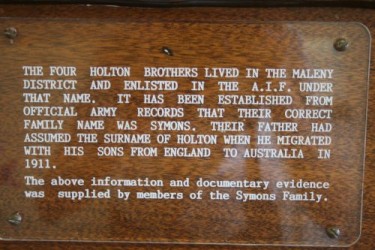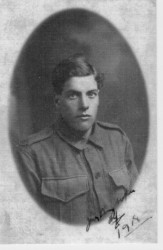HOLTON / SYMONS Alfred James
-
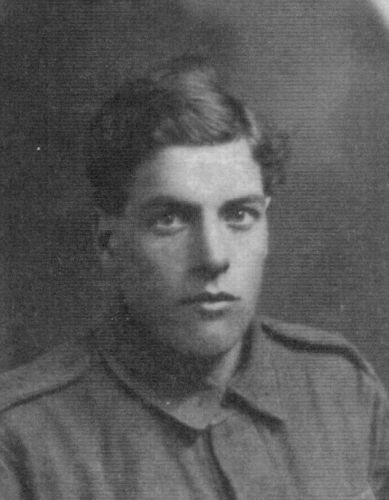
- 2823
- Private
- 5 Light Horse Regiment
- Camel Corps and 2nd Light Horse
- Mooloolah
- Yes
- 1896
- County of Essex - East London - England.
- 17 February 1916
- RMS Mongolia
- 8 July 1916.
- Sydney
-
Private Alfred James Symons (2823) alias Alfred James Holton.
Alfred was born in the County of Essex, East London, England.
He enlisted at Brisbane, Queensland on 17 February 1916 with the 5th Light Horse.
Alfred was described as being 19 years old, single, a dairyman, 5 feet 10½ inches tall, 140lbs, fresh complexion, blue eyes, brown hair, and of the Church of England faith. He gave his mother, Emily Holton of 32 Wellington Avenue, Chalkwell, Westcliffe-On-Sea, London, England as his next of kin.
His medical examination found that dental treatment was required.
The 5th Australian Light Horse Regiment, AIF, 19th Reinforcements, embarked from Sydney, New South Wales on board RMS Mongolia 8 July 1916.
The RMS Mongolia weighed 4,892 tons with an average cruise speed of 12 knots or 22.22 kmph. It was owned by the Indian & Peninsular St. Navigation Co Ltd Glasgow. Torpedoed and sunk on 21 July 1918.
Alfred was taken on strength with the 2nd Light Horse Regiment, Moascar, Egypt on 12 August 1916. He was transferred to Camel Corps 7 September 1916.
STATUTORY DECLARATION AUSTRALIAN HEADQUARTERS EGYPT - On 18 April 1918, at Cairo, Alfred (12th Coy., 3rd ANZAC Battalion) declared that he enlisted in the A.I.F. under an assumed name, his true name being Alfred Holton Symons. He further declared that his next of kin is now his mother, Emily Symons, C/- Mrs. Geo Byram, 80 Wightman Road, Haningay, London North. The necessary alterations have been made to all records in accordance with King's Regulations, para 1901.
He embarked from Port Said per H.T. Malwa for United Kingdom on 28 March 1919. He was granted leave in London from 12 April to 12 May 1919 and was to report to Headquarter on expiration
He returned to Australia per Prinz Ludwig on 9 July 1919.
TRANSPORT TROUBLE - PRINZ LUDWIG INCIDENT - London, Monday. Exaggerated accounts of the Prinz Ludwig trouble are gaining currency in the British newspapers. The facts are that the ex-German liner was held up at Plymouth for sixty days owing to defects in her engines. Several hundreds of men, women, and children were aboard. The men were not allowed ashore on the ground that they might overstay their leave and lose their passage. The patience of 660 men waiting to embark was similarly strained, and the men regarded the refusal of leave as red tapeism and unjust. They threatened to burn the camp and the ship, but the commanding officer held out until there was a loud explosion, after which he gave the men their first taste of shore leave. Queensland Times, 11 July 1919.
ARRIVAL OF THE PRINZ LUDWIG - The ex-German steamer Prinz Ludwig, flying the armistice flag, a white flag with a blue horizontal bar, arrived at the Semaphore anchorage on Wednesday afternoon-about 4 o'clock, and on being granted pratique was berthed at the Outer Harbor about 6 o'clock, when the South Australian quota were landed. The disembarkation proceeded without a hitch. There was a large crowd of people on the wharf to welcome the home comers. A pleasant voyage was experienced from London, and all spoke well of the treatment received on board.
Alfred disembarked at Sydney on 9 September 1919 for transfer to Brisbane. List 320.
PRINZ LUDWIG SOLDIERS FOR BRISBANE - The soldiers who returned to Australia in the steamer Prinz Ludwig (accompanied by wives) are expected to arrive at Brisbane by special train from Sydney at 5.40 p.m. to- day and will detrain at No. 5 Platform, Central Station. The usual arrangements have been made for the issue of passes to relatives from 9am to-day by the staff officer for returned soldiers, Victoria Barracks. Only those motor cars authorised by the Defence Department through the Returned Soldiers Transport Corps will be allowed within the enclosure; Relatives and friends of members of the Australian Imperial Force will not be allowed in these cars. The Brisbane Courier, 10 September 1919.
MEDICAL REPORT "6th Australian General Hospital" Devonport - 29 October 1919. Malaria, July 1917 "no attack since. Defective hearing. Had discharging of ear as a child" now periodically deaf with discharge.
Discharged medically unfit from the 2nd Light Horse on 13 November 1919.
Alfred received the British War and Victory Medal.
Three brothers also enlisted:
William Herbert Holton (426) 41st Battalion. Francis Holton (317) 11th Machine Gun Company. George Holton (441) 41st Battalion (Deceased).
DIVORCE DECREES. On the ground of desertion Mr. Justice E. A. Douglas granted orders nisi for divorce yesterday to Alfred Holton Symons, carpenter, of Toowong, from Louisa May Foster Symons of Kangaroo Point. The Courier Mail, 6 November 1941.
His father, Alfred Holton (alias) of Highlands, Maleny, Queensland was secretary of the Queensland Farmers Union (Q.F.U.) and involved with the Primary Producers Union (P.P.U.) while living at Maleny. He wrote countless letters to newspapers on this topic and others during the 1920s. By October 1925 he had left Maleny and was living at Bayswater Street, Rosalie, Brisbane, Queensland.
PRIMARY PRODUCERS' UNION - An article by A. Holton appeared in The Brisbane Courier on 9 October 1919. At a meeting of Obi Obi farmers, held on Tuesday, Mr. Holton (organiser of the Primary Producers' Union) expounded the policy and platform of that organisation. He first dealt with the pressing need for organisation amongst all engaged in primary production, which had led up to the combination of the existing foundation members - the United Cane Growers, the United Graziers, and the Q.F.U., which, he claimed, formed a very representative body of primary producers. The P.P.U. was a purely, political organisation, and in no way controlled or interfered with the industrial side of the various associations composing it. Further, whilst these organisations formed the foundation members, it was by no means exclusively confined to them, due provision being made for the inclusion and representation on the executive of all other associations engaged in primary production. He contended that a distinct Country Party was necessary. He outlined the platform and policy of the P.P.U., and said that while there was no sense of antagonism to the N.D.C. they were determined, nevertheless, to contest the country electorates with men of their own choice, selected by plebiscite.
Chronicle 1 March 1918, Mooloolah QFU meeting report notes a letter written by Pte Alf Holton thanking the committee for photo of the honour board.
PARENTS - Alfred Holton born 25 October1865 in 82 East Street, Marylebone, England. He married Emily Jane Jones on 13 August 1892 at Middlesex, England. Emily Jane Jones born in England died on 18 February 1949 - Sutton Road cemetery Southend-on-Sea.
Children:
May Symons. Francis Symons 1895 – 1919. Alfred James Symons 1896 – 1981. George Symons 1900 – 1917. William Herbert Corrie Symons 1902 – 1970.Alfred left his wife Emily in England with daughter May and emigrated to Australia with de facto Mary Edith Riches (born 30 May 1879 at Wisbeck, Norfolk) and his four sons. She died on 22 December 1931, Brisbane, Queensland. The Australian Census of 1919 shows Alfred (Dairy Farmer) and Edith (Home Duties) living on the Blackall Range, Mooloolah. They moved to Bayswater Road, Rosalie around 1925. Edith is shown as a shop keeper. In 1958 Alfred returned to Mapleton Road, Nambour. Alfred died on 3 July 1961 at Annerley, Brisbane. Father: Alfred Symons. Mother: Hannah Miller.
FAMILY STORY - The father of the four boys was Mr Symons. He left England with a de facto wife and his four sons and emigrated to Qld in 1803. He deserted his wife and daughter, telling the boys that the lady was their aunt and that their mother and sister would be joining them shortly. First the family settled at Crows Nest and then shortly after to Maleny, where he took up 160 acres on the escarpment. The plan was to settle the sons on the land at Maleny. The father and de facto had an illegitimate son born at Maleny and registered birth at Mooloolah.
As the boys got to their teenage years they realized their aunt was actually their father’s de facto and that they weren’t going to see their mother and sister again. Furious with their father they all agreed to join the army to get away from him.
Once they arrived overseas the boys took furlough in England and saw their mother and sister once only. The mother died a pauper and she and the sister stayed close together all their lives.
The two remaining boys stayed close and never saw their father again. Bill was with his young son in Brisbane city one day and saw his father from afar. He said to the boy “there is your grandfather” and when the boy said “let’s go and say hello”, he replied “Never!”
George said there is an illuminated scroll at Landsbrough Museum (don’t know of this) and commemorations at Caloundra RSL, Mooloolah and Maleny Hospital. George added the plaque explaining that the boys are actually Symons and not Holton.
The Holton name was one of the Christian names of their father, being a family name for a female side. He dropped the name Symons when he emigrated, obviously to make it more difficult to be found.
As told to Chrissy Fletcher 31 January 2015 by George Symons. Chrissy spoke to Bryan on 1 February who then very kindly emailed photos.
2015 - Alfred had a son George who at 93 lives in Brisbane and is the family historian plus two other brothers alive. Photos supplied by Bryan Symons, son of William.
-
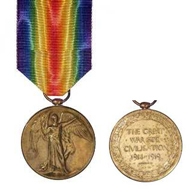
-
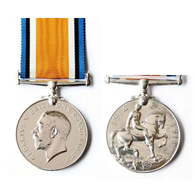
- Returned to Australia
- 9 July 1919
- 1981
-
Maroochy Shire Honor Roll, Shire Chambers, Bury Street, Nambour
Nambour (Maroochy Shire) Roll of Honor Scroll, Private Collection, Nambour (this scroll was available for sale to the public after the war)
Mooloolah, Glenview & Highlands Honour Board, Mooloolah Memorial Hall, Bray Road, Mooloolah
Soldiers' Memorial Hospital Maleny Roll of Honor, Soldiers' Memorial Hospital, Bean Street, Maleny
Shire of Landsborough Roll of Honour, Caloundra RSL, West Terrace, Caloundra
-
National Archives.
Chronicle 1 March 1918.
Queensland Times 11 July 1919.
The Courier Mail 6 November 1941.
Photos supplied by Bryan Symons, son of William.
- Helene

